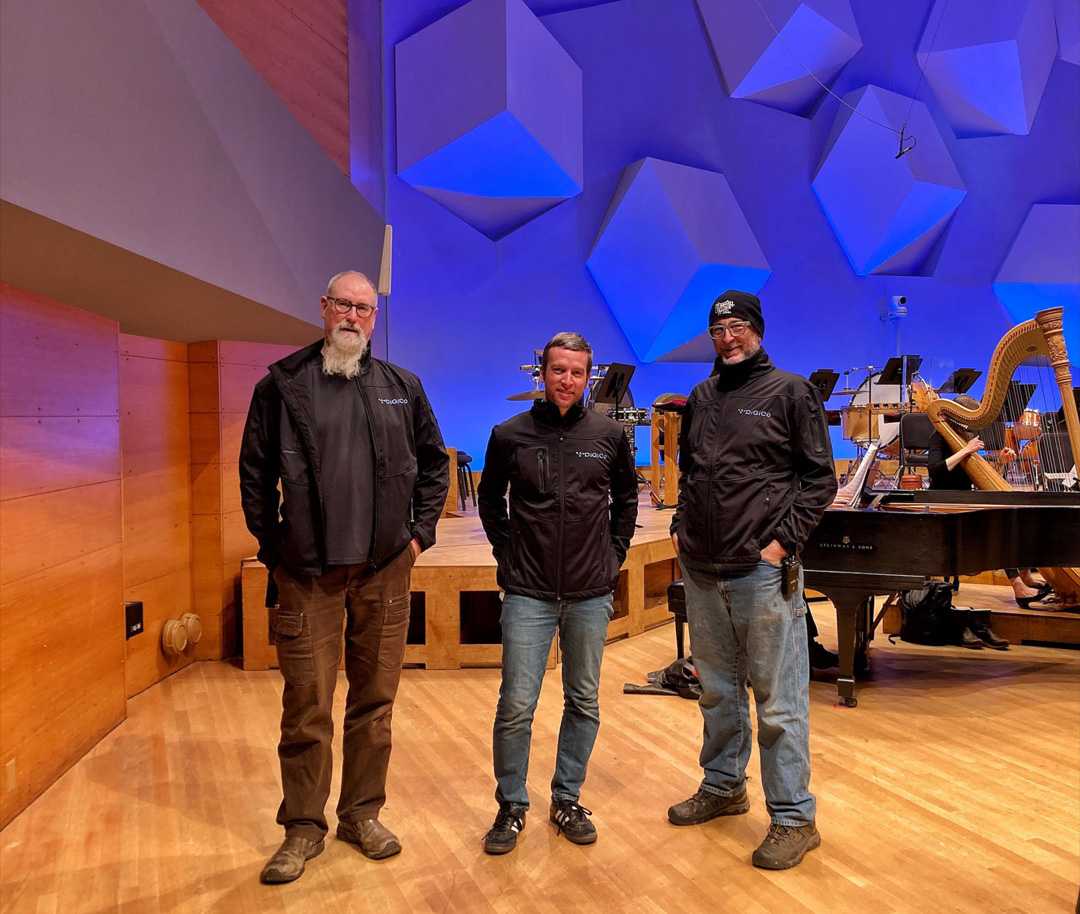Triple DiGiCo installation at Orchestra Hall
- Details

That experience has been enhanced with the installation over last August and September of a suite of DiGiCo systems, creating a renewed audio infrastructure for the venue and its ensemble, who were named the Gramophone Classical Music Awards 2021 Orchestra of the Year. This includes a Quantum338 as the front-of-house console, an SD12 96 used as the console for mixing orchestral and other performances for Minnesota Public Radio’s broadcasts, and an SD11i as an auxiliary mixer able to be deployed as needed.
The consoles are supported by three SD-Racks found at stage left, stage right and broadcast, plus two SD-MiNi Racks, one of which is located in the concert hall’s attic where it’s used to mix the hanging audience microphones. Together the SD-Racks make 32-bit mic preamps available virtually anywhere in the venue. A DiGiCo 4REA4 processor is used to distribute audio throughout the entire facility to as many as four customizable event spaces such as the lobby.
Further, a DMI-KLANG immersive in-ear mixing system is providing immersive-surround sound for the orchestral broadcasts for listeners using headphones or earbuds. Other components include an Orange Box, used as an interface for MADI for the Quantum338, and two DiGiGrid MGB interfaces that connect the Quantum338 to a SoundGrid network and Reaper software used for recordings at 96 kHz resolution.
“It is a pile of DiGiCo gear, but every piece of equipment does a specific job and together they form a special audio infrastructure here,” says Jay Perlman, head audio engineer for the Minnesota Orchestra, who designed the new infrastructure in collaboration with local AV systems integrator Audio Logic Systems, which was also the vendor for the DiGiCo audio products. “The goal was to be able to access high-resolution audio in any part of the building we needed to. And as you can tell in how we applied the DMI-KLANG processor to the streaming broadcasts, we like to take chances and experiment, but it’s really created something special.
Joel Mooney, the Minnesota Orchestra’s technical director, adds, “Before, we had all analogue systems for audio, with no way to connect different parts of the building for sound, and it was also a group of different brands that weren’t designed to work together. Now, everything is fully integrated and it’s all on an Optocore fiber network. The concert hall can connect to the lobby and to the broadcast center. It’s such a better operational environment.”
















